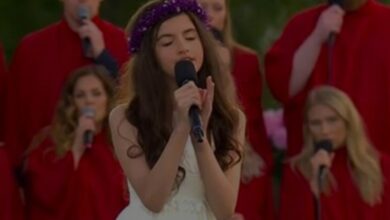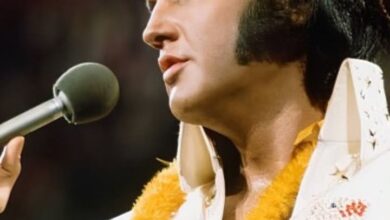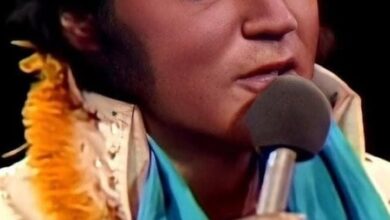Elvis’s 60-year-old song continues to sound as fresh as it did decades ago.
Elvis Presley, an American icon whose influence on music and culture is immeasurable, made an indelible mark with his 1960 release “The Girl of My Best Friend.” This track, emblematic of his early rock and roll era, highlights the emotional depth and vocal prowess that characterized much of his work. “The Girl of My Best Friend” was part of the album G.I. Blues, which served as the soundtrack for Elvis’s film of the same name, further cementing his status as a multifaceted entertainer.
The song was penned by Sam Bobrick and Beverley Ross, and it captured the essence of a classic rock and roll ballad with a straightforward yet poignant narrative. The lyrics explore the familiar theme of unrequited love and personal conflict, as the protagonist struggles with his feelings for the girl who is romantically involved with his best friend. This theme resonates with many, making the song relatable and emotionally impactful.
Elvis’s rendition of “The Girl of My Best Friend” is particularly notable for its dynamic vocal performance. His delivery is infused with a sense of urgency and longing that brings the lyrics to life. This ability to convey deep emotions through his music was a hallmark of Elvis’s career, showcasing his exceptional talent as a vocalist. His powerful voice, combined with his emotive phrasing, elevates the song beyond its simple narrative, making it a standout track in his discography.
The track was initially recorded by Charlie Blackwell in 1959, but it was Elvis’s version that truly brought the song to prominence. Released in early 1960, Elvis’s take on the song reached No. 5 on the US Billboard Hot 100, demonstrating his continued commercial appeal and solidifying the song’s place in rock and roll history. The success of the single contributed to the album’s popularity, which further enhanced Elvis’s standing as a leading figure in the music industry.
Elvis’s interpretation of “The Girl of My Best Friend” reflects the broader context of his career during this period. By the late 1950s and early 1960s, Elvis had transitioned from his rebellious rock and roll beginnings to a more polished and mainstream persona, partly due to his focus on film and television. Despite this shift, his musical releases continued to resonate with audiences, demonstrating his versatility and enduring appeal.
The song’s arrangement complements Elvis’s vocal performance with a rich blend of instrumentation typical of the rock and roll era. The upbeat tempo and catchy melody, coupled with the song’s relatable lyrics, made it a favorite among fans. Its success on the charts and its continued popularity are testaments to Elvis’s ability to connect with listeners and capture the essence of the era’s musical zeitgeist.
In addition to its commercial success, “The Girl of My Best Friend” has been recognized for its influence on subsequent artists and its place in Elvis’s legacy. The track remains a beloved example of Elvis’s contribution to rock and roll and pop music. As a key part of his extensive catalog, the song exemplifies his skill at turning simple stories into compelling musical experiences.
Overall, “The Girl of My Best Friend” stands as a classic example of Elvis Presley’s talent and appeal. It not only reflects the cultural impact of his music during the 1960s but also continues to be celebrated by fans and critics alike. As one of his most iconic songs, it remains an enduring testament to his legacy as a pioneer in the world of rock and roll.



